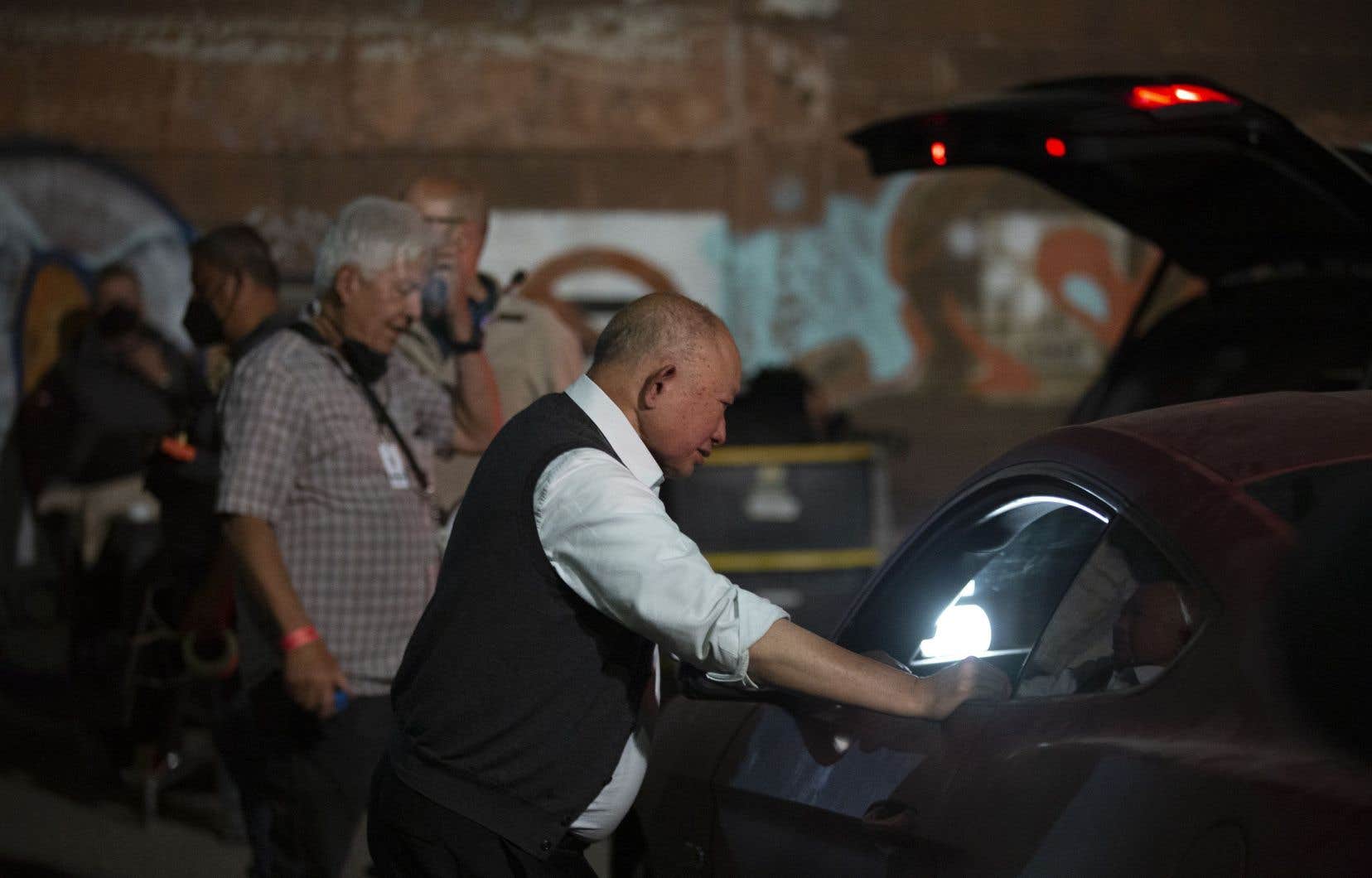On Christmas Eve, Brian and Saya helplessly witness the death of their only son. Hit by a stray bullet, the child succumbs in the arms of his parents. The projectile was fired by Playa, the leader of the criminal gang that is terrorizing the city. Injured in turn while trying to avenge his boy’s death, Brian loses the use of his vocal cords. However, he is more determined than ever to definitively stop Playa and his men. Directed by the venerable John Woo, to whom we owe Hard Boiled And Face/Off (Dual identity), Silent Night (Silent revenge) contains no dialogue: a challenge, even for a formalist of this caliber. Exclusively, the filmmaker explains to us why.
“Robert Archer Lynn’s screenplay immediately excited me with this daring bias: a mute hero and no dialogue from the other characters. The prospect of bringing this to the screen delighted me, because I knew that I could push a purely visual narrative very far,” relates the filmmaker.
It must be said that John Woo, from the films A Better Tomorrow And The Killerhis first action successes in Hong Kong in the mid-1980s, established himself as a formalist with an eminently recognizable style: almost lyrical slow motion, crossfire shootouts often with a weapon in each hand, elaborate sequence shots, without forget the flights of doves (see among others Mission: Impossible II).
For the record, John Woo told us in 2022, when he was honored by the Fantasia festival: “ [l]he action scenes remind me of numbers from the musical films of my childhood. That is to say, for me, an action scene is a dance; It’s like a ballet in my mind.”
Hero but not superhero
However, this time, John Woo wanted to take advantage of this unique proposition to renew himself on a formal level: a great sign of artistic health for a 77-year-old director.
“You know my style: a lot of choreographed shootouts, explosions… birds flying away… This film, I said to myself that it would be good to give it a more realistic, more raw style: it’s not not a sophisticated narrative; it’s not a fairy tale. Of course, the film has a lot of fight scenes, but I approached them in a more raw way. Each shot seems all the more real because the lead actor, Joel Kinnaman [la série The Killing, les deux versions du film The Suicide Squad/L’escadron suicide], performed all of the fights and stunts himself. And then, for these fight scenes, I only use one long take, without cutting. »
This means that the filmmaker, despite his concern for simplicity, has not given up on his beloved sequence shots. And that’s good.
“In my opinion, this technique ensures that the public is more involved, more challenged, viscerally. In terms of visual energy, it’s also more exciting, it seems to me. And then, in this specific case, the sequence shot lent itself perfectly to my desire for realism. »
In fact, each cut constitutes a reminder that we are witnessing a production. Conversely, the sequence shot keeps the eye, and therefore the mind, captive for its entire duration. From then on, we momentarily forget the ambient cinematographic illusion.
“Besides, if Joel appealed to me as an actor, it was because he could be credible as an action hero while not looking like he came out of a superhero film. It is true”. In terms of discussions and actor direction, I especially explained to him that in the absence of dialogue, what he expresses with his eyes, and how he expresses it, his expressions, all of this would be of capital importance. . Everything he had in his heart had to show in his eyes. »
A note about superheroes: John Woo recently told New York Times prefer Martin Scorsese films to those of the Marvel Cinematic Universe. This, in connection with the controversy which has been going on since the director of Goodfellas (The Freedmen), of Casino and of Killers of the Flower Moon (Note American) declared that the latter are not cinema.
Elevate the drama
In any case, in the particular context of Silent Night, music takes on increased importance. In this regard, John Woo discussed at length with Marco Beltrami (Scream/Chills, Hellboy, Snowpiercer/The Transperceneige) of the type of orchestration that should be used.
“I wanted to give Marco a lot of creative freedom. However, in a film like this, the music ultimately becomes the dialogue. Marco and I therefore worked closely together. I provided him with references, notably film scores composed by Ennio Morricone. He had this genius for combining romantic melodies with sudden serious or sinister impulses. I longed for something parental. Marco understood this. He understood that music not only had to serve the drama, but also elevate it. »
According to John Woo, dialogue, in Hollywood films in general, often serves to explain, or even overexplain, what is happening and what we should feel. “Music can do that very well too. The eyes of an actor too. The public is intelligent, and sometimes silence is better than dialogue. »
The film Silent Night will take the poster on 1er December.
